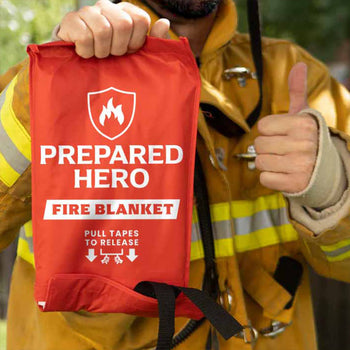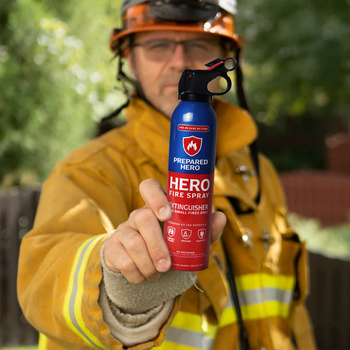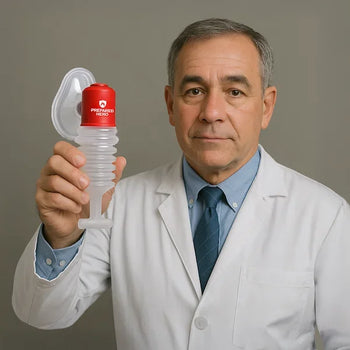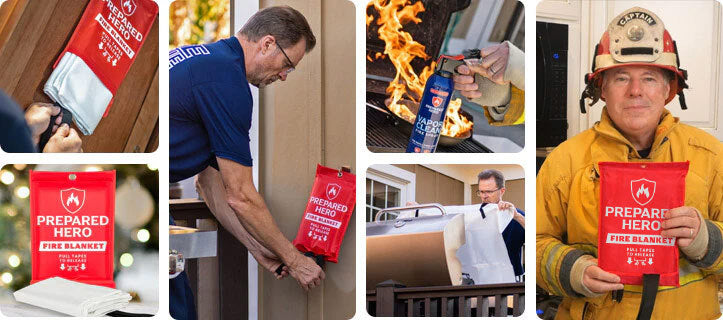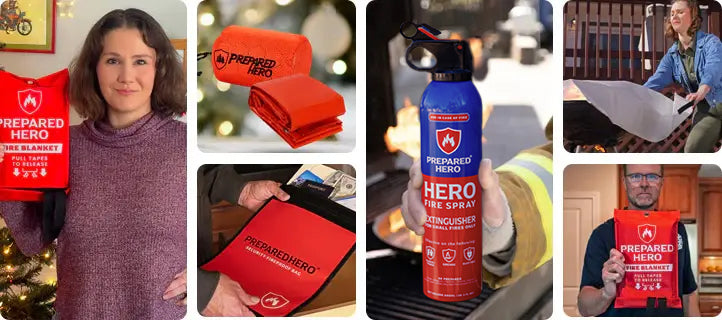Where you put your smoke detectors matters just as much as installing them. Proper placement makes sure they can detect...
Many people think that cooking is not dangerous. You might scorch your skin while boiling pasta or burn chicken while frying it, but in terms of actual danger, not so much―except for grease fires.
You see, the National Fire Protection Association (NFPA) states that cooking causes an average of 158,400 reported home fires per year. This equates to about 44% of all reported home fires in the US. The fires also caused 18% of all home fire deaths and 42% of home fire injuries annually. Plus, 66% of the home cooking fires started because of the ignition of cooking materials, including grease.
Knowing how to put out a grease fire could mean the difference between a small flame and a burned house. If you don’t know where to start, we've got your back. This guide covers how grease fires start, where they occur, and how to prevent and put them out.
What Is a Grease Fire?

Let's talk about grease fires first to better understand how to put them out. As the term suggests, grease fires are caused by cooking oil and fat. Also known as Class K fires, it is one of the most difficult types of fire to extinguish. It’s because water makes grease fires worse by spreading them or causing an explosion. Since many fire extinguishers are water-based, using the wrong one can cause a disaster.
In a gist, a grease fire starts when cooking oil, fat, or grease becomes too hot. The oil will then boil, smoke, and ignite. Common causes of grease fires include vegetable oils and cooking fats like butter or bacon.
Unattended cooking is the top reason why grease fires start. Leaving that turkey in the oven or deep frying frozen chicken causes millions of dollars in property loss every year. While grease buildup isn’t the leading cause of grease fires, you should be extremely careful. Grease usually accumulates inside ovens and on stoves, especially if you don't clean them regularly.
Plus, we ignore grease even though it can build up everywhere: walls, counters, vents, ovens, pots, and pans. If they’re not regularly cleaned and come into contact with a heat source, the residue can ignite. The grease fire can then spread to other parts of your house, making it harder to control.
Are Grease Fires Dangerous?

Grease fires are dangerous for many reasons. For one, oil fuels it. Oil can splatter and reach areas beyond where the grease fire started. It’s also combustible and heats up quickly. Once it starts to smoke, it can catch fire as quickly as 30 seconds.
In addition, there’s a huge misconception about grease fires, which causes people to use the wrong extinguishing method. You see, many people think they can use water to put out grease fires. However, you should never use water to put out a grease fire because it spreads the fire or causes an explosion.
It goes down to one scientific principle: oil and water don't mix. When you throw water into a burning pot of oil, the water goes to the bottom and becomes steam. As a result, the water pushes the oil out and breaks into tiny droplets. The droplets then mix with oxygen and explode. This explosion can spread the flames, cause burns, and reignite the fire. Similarly, using the wrong types of fire extinguisher (the water-based ones) makes the grease fire worse.
How Does Grease Catch Fire?

Grease fires start when cooking oil, fat, or grease becomes too hot. Oil starts to boil once it reaches its boiling point, which is indicated by its temperature and pressure. You should also take note that oils can reach their smoking points faster than expected.
Then, the oil releases smoke. This happens after the oil reaches its smoking point. The smoke means the oil is overheating and may catch fire soon. It also warns you to turn off the heat source as soon as possible.
Lastly, the oil, fat, or grease catches fire. If the oil continues to heat up and release smoke, it will eventually catch fire. This happens because the vapor and droplets from the boiling oil ignite.
Is Vegetable Oil Flammable?
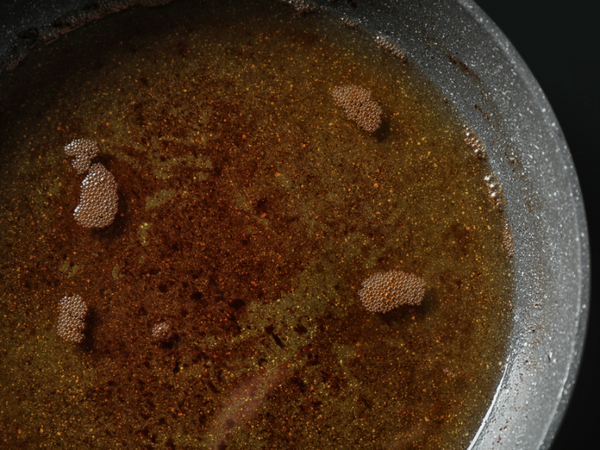
Vegetable oil is not flammable, but it can catch fire while cooking. According to the Occupational Safety and Health Administration, any liquid with a flash point less than 100°F or 37.8 °C is flammable. Since the average flash point of vegetable oil is 600 °F or 315°C, it is not flammable.
But this doesn't mean vegetable oil can’t catch fire while you’re using it. In fact, according to the same guidelines, vegetable oil is technically combustible. Plus, there’s a wide range of vegetable oils in the market, including olive, canola, sunflower, and peanut. So, be careful when cooking at high temperatures (e.g., deep-frying and searing) because they get your oil close to their smoking points. Find out more about vegetable oils here.
Common Cooking Oils and Their Smoking Points

Whether you're frying, baking, or sautéing, knowing how hot your oil can get helps prevent grease fires. Here are the most common fats and oils with their smoke points:
|
Cooking Oil |
Smoking Point (°F) |
Smoking Point (°C) |
|
Butter |
350°F |
177°C |
|
Lard |
370°F |
188°C |
|
Coconut Oil |
400°F |
204°C |
|
Canola Oil |
400°F |
204°C |
|
Cottonseed Oil |
446°F |
230°C |
|
Sesame Oil |
450°F |
232°C |
|
Sunflower Oil |
450°F |
232°C |
|
Peanut Oil |
450°F |
232°C |
|
Rice Bran Oil |
450°F |
232°C |
|
Soybean Oil |
453°F |
234°C |
|
Palm Oil |
455°F |
235°C |
|
Olive Oil |
465°F |
241°C |
|
Safflower Oil |
510°F |
266°C |
What Causes Grease Fires?

Grease fires can quickly start, and knowing what causes them helps you put them out. Here are the common causes of grease fires:
Unattended Cooking
Unattended cooking is the top cause of cooking fires, according to an NFPA report. Distractions like answering phone calls or watching TV divide your attention when cooking. Always focus on your cooking, especially when you’re using oil. For instance, cooking French fries can cause a grease fire if the oil ignites while you’re drinking wine.
Overheating
Oil ignites when you heat it beyond its smoke point. For instance, frying chicken on high heat can cause the oil to smoke and catch fire. Oils have different smoke points, and knowing your oil’s limits prevents it from burning. Always monitor your cooking and lower the heat to keep things safe.
Overcrowding
Putting too much food in the pan, especially when you’re frying, causes overcrowding. For example, frying too many pieces of bacon at once might cause the oil to ignite. Frying too much at once can also push the oil out of the pan or pot.
Frying Wet Food
A grease fire can also start if you throw frozen or wet food into the fryer. Frying food without completely thawing creates steam that ignites the oil or pushes it out of the pot. As a result, the oil can ignite and spread to other areas. For instance, frying frozen chicken wings directly from the freezer can start a grease fire.
Old or Degraded Oil
Using oil that’s been used multiple times is a fire hazard. Old oil breaks down and has a lower smoke point, making it more likely to ignite. For example, month-old oil won’t handle high heat well anymore. It can ignite even if you don’t put it on high heat for long. Remember, fresh oil is safer and healthier.
Grease Buildup
Grease can build up on stoves, ovens, or vents. Once the buildup comes into contact with heat or open flame, it can quickly ignite. For instance, not cleaning your stove regularly can cause grease buildup. The next time you turn it on, the heat can ignite the grease and burn everything on top.
Flammable Materials Nearby
Cooking with oil near flammable materials like paper towels, cleaning rags, or wooden utensils can lead to grease fires. Place flammable items at a safe distance from your cooking area. For example, don’t leave a paper towel roll on a hot oven.
Using the Wrong Pot or Pan
Not all cooking pots or pans are designed for high-temperature frying. Frying with pots or pans that can’t handle high heat can lead to grease fires. For instance, using a thin pan can start a grease fire if used for deep frying.
Where Do Grease Fires Occur?

Grease fires can happen in many places, and it’s important to know where to watch out for them. From home kitchens to busy restaurants, there’s always a risk. Here is the list of places where grease fires usually occur:
Home Kitchens
You’re not immune to grease fires even when you’re at home. Whether you’re whipping up a quick stir-fry or preparing a holiday meal, a grease fire can start in your kitchen. For instance, roasting turkey and getting distracted by a phone call might ignite a fire.
Restaurants
Restaurants are hot spots for grease fires. The fire risk increases significantly with multiple frying stations and grills in action. Imagine a busy lunch rush at a burger joint with multiple fryers. If someone accidentally lets a pot of oil boil over or forgets about a fryer, it can ignite in seconds. For these reasons, many restaurants have kitchen fire suppression systems.
Food Trucks
Food trucks, while compact, can still be dangerous when it comes to grease fires. Many sell fried foods like nachos or fried dough, which increases the risk of grease fires. For example, a food truck selling funnel cakes during a busy music festival is prone to grease splatters or spills that could ignite. Managing a fire can be challenging with limited space, so quick access to a fire blanket or fire spray protects workers and customers.
Outdoors
Cooking outdoors, whether in your yard or a campsite, can lead to grease fires. For instance, grilling steaks with an oil-based marinade can start a grease fire if the drippings hit hot coals. Additionally, using too much oil while cooking over a fire pit can cause a grease fire, especially if there are flammable items like dry leaves or paper towels nearby.
Catering Events
Catering events are also prone to grease fires. Think about a wedding reception where staff are frying appetizers left and right. A grease fire could occur if the oil in the fryer overheats or someone accidentally spills it.
How to Put Out a Grease Fire

Grease fires mostly involve stoves and ovens. To help you put out grease fires properly, we divided this section into two: how to put out stove grease fires and oven grease fires.
How to Put Out a Stove Grease Fire

You should act fast once a fire ignites on your stove. Follow the steps below if you feel safe and confident about putting out the grease fire:
1. Turn off the heat.
Stay calm and turn off the heat immediately if you can safely access the knob. Doing this removes heat, which is an element of the fire triangle. Without any element, the fire won’t continue burning. Do not move the pot or pan because the oil might splatter, and the air might spread the flames.
2. Use a fire blanket to cover the fire.
If you can’t go near the stove to turn it off, there’s another element you can safely remove from the equation: oxygen. This is where a fire blanket comes in. By covering the fire with it, oxygen can’t come in anymore. Keep it covered until the fire is completely out. Using extra large fire blankets also gives you more coverage.
3. Use a fire spray or fire extinguisher.
Use a fire spray or fire extinguisher if you don’t have a fire blanket. A multi-purpose fire spray like the Vapor Clean Fire Spray and the Dry Stop Fire Spray can put out grease fires in seconds. Unlike fire extinguishers, they’re lightweight, compact, and non-toxic. They also don’t leave a huge mess.
If a fire extinguisher is your only choice, please make sure you’re grabbing the right one. You can only use Class K fire extinguishers to put out grease fires. These extinguishers are usually marked with a black hexagon with the letter K inside. In some cases, only the letter K is on the container. Then, use the PASS (Pull, Aim, Squeeze, Sweep) fire extinguisher technique to safely put out the fire. Learn more about choosing the right kitchen fire extinguisher here.
4. Exit the house and call the fire department.
If the fire is getting out of control fast or you can’t put it out, evacuate your house and call the fire department immediately. Remember, material things can be replaced, and lives are priceless.
How to Put Out an Oven Grease Fire

Oven grease fires are just as dangerous as stove fires. However, you should deal with them differently because an oven is enclosed. Here’s how to safely put out an oven grease fire:
1. Leave the oven closed.
Fire can’t continue without oxygen, so leaving the oven door closed can help. If you’re lucky, the fire will die on its own. But if you see it burning after giving it enough time to die, determine if it’s safe to put out the fire on your own. If yes, proceed to the next steps. If not, proceed to the last.
2. Turn off the heat source.
Turn off the oven and unplug the oven. Then, do the same with other appliances nearby. Doing this removes heat from the equation and prevents the fire from spreading to other areas.
3. Use a fire spray or extinguisher.
Slowly open the oven and use a fire extinguisher or fire spray. Aim at the base of the fire, then sweep the tool from side to side until the fire is out. Make sure to completely spray the affected area. Keep an eye on your oven once the fire is out because it might reignite.
4. Leave your house and call the authorities.
If you feel unsafe or unsure about putting out the oven grease fire, exit your house and call the fire department immediately. Make sure everyone is accounted for, especially if you live with kids and the elderly.
Do you want in-depth guides to fighting oven fires? Check out how to prevent and put out an oven fire and how to clean your oven here. If your oven caught on fire, find out if you can still use it here.
What to Do if You Can’t Put out a Grease Fire

Prioritize everyone’s safety if you can’t contain a grease fire. If the flames get out of hand, don’t panic and evacuate your house immediately. Follow the RACE fire safety acronym if possible.
Rescue people who need help, alert everyone that there’s a fire, and close the doors and windows as you exit the building. Once you’re outside, call 911 or your local fire department. Let them know the nature of the fire, the size of your house, and your location.
While waiting for the firefighters to arrive, stay at a safe distance from your house. Don’t try to go back inside for any reason. If the fire spreads beyond the kitchen or you notice smoke filling the house, stay put and let the firefighters do their jobs. Remember, your lives are worth way more than your property.
How to Prevent Grease Fires

Cooking is fun, but it comes with risks, especially grease fires. Fortunately, you can avoid turning your delicious meal into an inferno by following some tips. Here’s how to prevent grease fires:
1. Stay in the Kitchen
Never leave cooking oil unattended. Turn off the heat source or ask someone to watch what you’re cooking if you need to leave. It’s easy to get distracted, but unattended cooking is a no-no. Focus on what you’re cooking to keep everyone safe.
2. Know Your Oil’s Smoke Point
Different oils can withstand different temperatures. Be familiar with the smoke points of the oils you use. For example, olive oil smokes at around 465°F or 241°C, so don’t heat it beyond that temperature. Having a kitchen thermometer also helps you accurately measure your cooking temperature.
3. Heat Oil Slowly
Heat oil at low or medium heat. Remember, it’s better to take your time than to put the heat on high and risk a grease fire. Always pay attention to the oil as well—if it starts to smoke, turn off the heat right away.
4. Avoid Overcrowding
Don’t fill your pan or pot with oil. Adding too much food at once can also drop the oil’s temperature, causing you to heat it longer and increase the risk of overheating. Fry in batches to cook things evenly and safely.
5. Don’t Fry Wet or Frozen Food
Always thaw frozen food or pat wet food with paper towels before adding them to hot oil. Putting wet or frozen food on oil can create steam that ignites or splatters the oil. This can lead to burns or a grease fire that can consume your kitchen.
6. Use Fresh Oil
Avoid reusing oil too much. You can only use it up to three times before it breaks down. If you’ve been using the same oil too often, swap it out for some fresh stuff immediately.
7. Keep Your Kitchen Clean
Regularly clean your stove and oven to avoid grease buildup. Grease can ignite if it gets hot enough, so keep things clean. Decluttering your kitchen regularly also helps prevent fire from spreading quickly. Picture a kitchen filled with greasy rags and open boxes, where a grease fire can spread in less than a minute. Don’t let this be yours.
8. Keep Flammable Items Away
Place paper towels, dish rags, and anything flammable away from your stove, oven, toaster, coffee maker, and other heat sources. Have a designated area for paper towels, boxes, rags, and napkins far from any cooking appliance. Be careful of packaging materials and plastic items as well.
9. Use the Right Cookware
Use pots and pans that can withstand high temperatures. Thin or low-quality pans can overheat fast and lead to grease fires. Sturdy cookware might cost you upfront, but they’re a great investment that prevents fires and keeps your food delicious.
10. Have a Fire Blanket, Fire Spray, or Fire Extinguisher Ready
Always keep a fire blanket, fire spray, or Class K fire extinguisher. Know how to use them properly and keep them in an accessible spot.
What Is a Quick Way to Put Out a Grease Fire?

There are three quick ways to put out a grease fire: using a fire blanket, fire spray, or grease fire extinguisher.
A fire blanket works on grease fires by removing oxygen from the equation and smothering the flames. Oxygen is also the easiest component to remove from the fire triangle because it’s harder to cool down a grease fire or remove the fuel (in this case, the food and grease). It also helps dissipate heat and protects you from injuries. The fire blanket’s inner layer insulates the fire and helps cool it down, while the outer layer keeps the flames from touching you.
You can use a fire spray as well. They create a barrier between the flame and the fuel, helping the fire cool down. The extinguishing agent also suffocates the fire and coats the fuel to prevent the grease fire from reigniting.
Meanwhile, grease fire extinguishers work by cooling the oil below their autoignition points. The extinguishing agent also creates a soapy blanket that stays on top of the fuel and prevents the fire from reigniting. Since the agent comes out as a fine spray, it also prevents the oil from splashing everywhere.
Can You Use Flour to Put Out a Grease Fire?

No, you can’t use flour to put out a grease fire. While using the powder seems like a good idea, it’s not.
Flour explodes when its particles get suspended in the air and ignited. Its molecules burn quickly and expand because of heat. As a result, flour explodes. The risk is higher in mills and processing plants where large amounts of flour dust get loose in closed spaces.
Plus, flour contains starch, a complex carbohydrate made of glucose molecules chained together. Glucose is highly flammable. This is why marshmallows held over an open flame quickly turn brown or black. While most flours are not sweet to taste, they have sugar's highly flammable properties, making them unfit for putting out grease fires.
What Is the Wrong Way to Put Out a Grease Fire?

It’s wrong to use water to put out a grease fire. Water and oil don’t mix, so putting water on a grease fire will make it splatter and spread the flames. In worse cases, it will cause an explosion.
Another common but wrong way to put out a grease fire is using a wet towel. The water will evaporate because of heat. As a result, the towel will dry up and burn. A wet towel isn’t also large enough to fully cover a pot or pan. In other words, anything with water can make grease fires worse. Check out our fire blanket and wet towel comparison to see why a fire blanket is better.
Some people think baking soda can help with grease fires. While baking soda can help put out tiny flames, it’s not a practical choice. You’ll need boxes and boxes of baking soda to fully cover a grease fire, and we doubt you have that much sitting in your kitchen. Plus, in this economy, using a fire blanket is a more affordable option. Find out why a fire blanket is better than baking soda when putting out fires here.
Next on our list is a lid. While a lid can help remove oxygen from the equation, it is risky. For instance, a glass lid could explode because of extreme heat. The glass shards can cut your skin or go into your eyes. Plus, a lid has to completely cover the grease fire to be effective. Check out our fire blanket and lid comparison here.
Will a Grease Fire Eventually Burn Out?

A grease fire might eventually burn out, but relying on that is dangerous. Grease fires usually burn hotter and longer than regular fires because of the oil involved. If left unchecked, they can spread quickly and burn nearby items.
Don’t wait for it to burn out on its own. Take immediate action if it’s safe to do so. Put it out using a fire blanket, fire spray, or Class K fire extinguisher. If it’s unsafe to do this, leave your house and call the fire department immediately.
Remember, waiting for a grease fire to burn out endangers your lives and property. Always prioritize your safety and take action as soon as you see a grease fire.
Will a Wet Towel Put Out a Grease Fire?

No, a wet towel won’t put out a grease fire. You should never use anything containing water, including a wet towel, to extinguish a grease fire.
When you place a wet towel on a grease fire, the hot oil will splatter, spread the flames, or explode. While people think a wet towel can cool down the fire, it is limited. Once the water in the towel evaporates, the towel dries up and adds fuel to the fire.
How Quickly Does a Grease Fire Spread?

A small grease fire can turn into a major one within 30 seconds. Once the grease ignites, the flame can quickly burn nearby flammable items, including wooden utensils, paper towels, and food packaging. This can worsen the grease fire in seconds and create a situation that’s too hard to control. Plus, it only takes a few minutes for a grease fire to flare up and consume your entire house.
How Do You Clean Up After a Grease Fire?
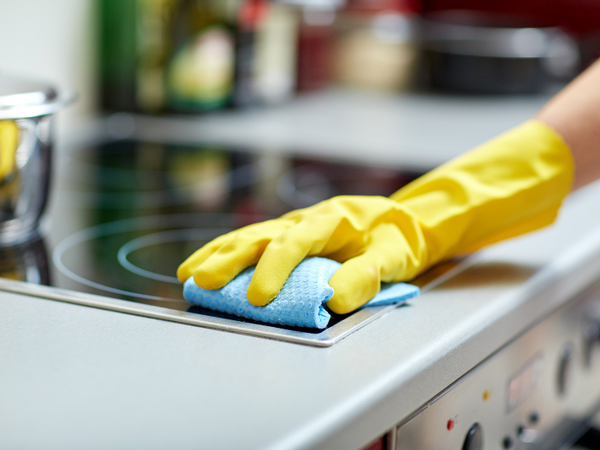
Cleaning up after a grease fire doesn’t have to be daunting. From ventilating your kitchen to handling smoke stains, you can restore your space in no time. Here’s how to clean up after a grease fire:
1. Ventilate Your House
First things first: ventilate your home. Open all windows and doors to let fresh air circulate throughout your house. Doing this clears out smoke and other lingering odors. It also makes cleaning up after the fire easier.
2. Set Up Vinegar Bowls
Vinegar helps absorb odors and remove mildew. Grab some bowls and fill them with up to one inch of distilled vinegar. Then, place the bowls around the affected area and leave them there as long as needed.
3. Wash Affected Fabrics
Smell your pillows, clothes, or linens that might have absorbed bad odors. Wash the affected items as soon as possible. Use the hottest water that’s safe for the fabric. Then, add a cup of vinegar to the rinse cycle to neutralize any remaining odors. Once done, wash the fabrics again with regular detergent and fabric conditioner.
4. Clean Hard Surfaces
Tackle hard surfaces next. Wear rubber gloves and mix one gallon of warm water with four to six tablespoons of trisodium phosphate and one cup of bleach. Then, dip a damp towel into this solution and wipe down cabinets, countertops, appliances, and other hard surfaces.
5. Remove Soot and Stains
Use the same cleaning solution and scrub any soot or smoke stains from walls, furniture, and ceilings. You might need to go over these spots many times to fully remove the soot and stains.
6. Wipe Again
Take a clean towel and dampen it with clean water. Then, wipe down all surfaces again to remove any leftover cleaning solution. Finish by wiping everything with a clean, dry cloth to prevent mildew.
7. Use Baking Soda
Lastly, sprinkle dry baking soda on carpets and fabric surfaces with bad smells. Let it sit overnight to get rid of the odors. Once done, vacuum them thoroughly.
Take a moment to inspect your house after cleaning. If any odors or stains persist, repeat the cleaning steps as needed. With some effort, your space will smell fresh and clean again. As an alternative, you can call in a fire damage restoration company to clean your home.
Conclusion
A grease fire is dangerous, but knowing how to put it out helps your family stay safe and sound. It’s also not just about knowing what to do. It’s about being proactive as well. Investing in fire prevention tools helps prevent a small grease fire from becoming a full-blown disaster. Stay prepared, hero!


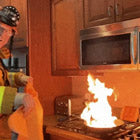 Fire
Fire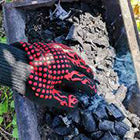 Safety
Safety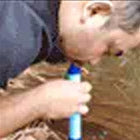 Survival
Survival Protection
Protection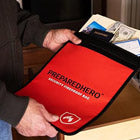 New
New
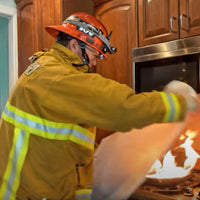 Fire
Fire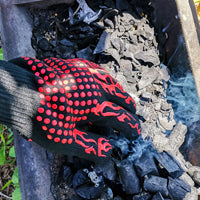 Safety
Safety Survival
Survival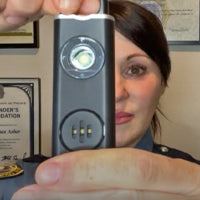 Protection
Protection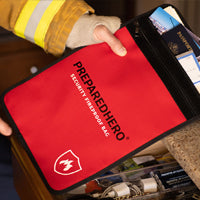 New
New
